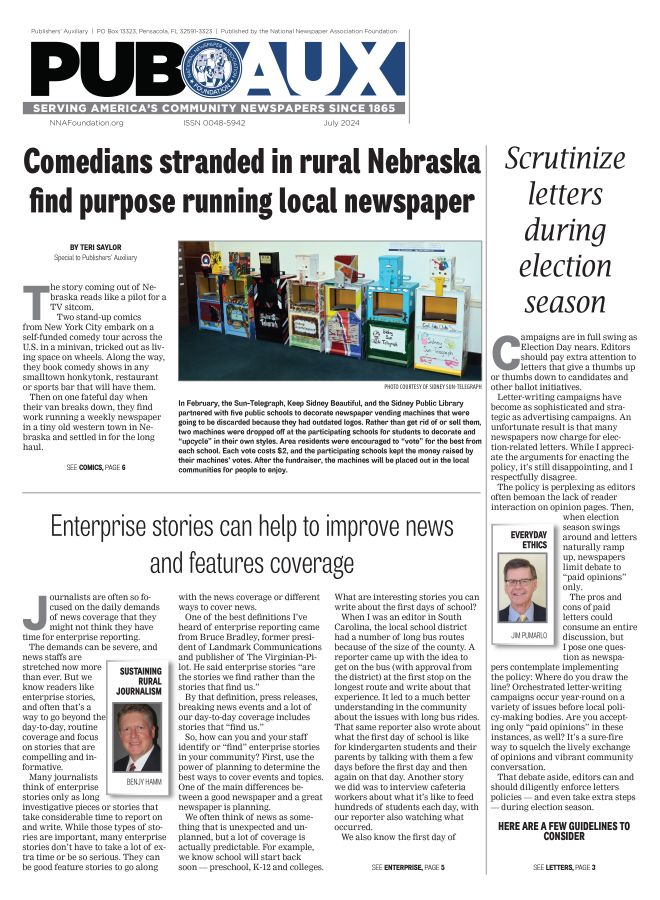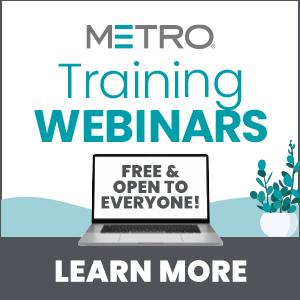Reduce your health care costs
Nov 3, 2014
By Stanley Schwartz
Managing Editor | Publishers’ Auxiliary
SAN ANTONIO, TX—Newspaper owners could save some money on health insurance costs, said Steve Wyss, if they follow the strategies he outlined during his pre-convention workshop.
Wyss spoke during the National Newspaper Association’s 128th annual convention and trade show. About 30 people listened to him explain how they would be affected by the Affordable Care Act, and what they could do to reduce their health care costs.
Wyss, who is co-owner of Affinity Group Underwriters, noted that the ACA has little or no effect on health care costs or premiums. Affinity advises companies on how they can navigate health care regulations.
“Initially, it (the ACA) has mostly been about expanding access to health insurance,” he said. Long term effects, however, are not yet known, he added.
The top five most consequential provisions of the Act, he noted are:
• Guaranteed issue—where there are no pre-existing condition exclusions.
• Federal subsidies.
• Modified community rating.
• Free preventative care.
• A prohibition on annual and lifetime payment limits.
With premiums up 182 percent since 1999, Wyss said current group coverage for a single person could be $5,884, with family coverage reaching $16,351.
“For many companies,” he said, “health insurance has become their No. 2 or No. 3 largest expense.”
His advice: The best way to save money on insurance is to buy less of it.
If you employ two to 100 people at your newspaper, Wyss said his company has strategies to help with costs. “Some apply to under 50 employees with coverage,” he added.
There are those companies that have said that they would just pay the penalty for not covering their workers, rather than offer coverage. Wyss said this is not the way to go; that publishers could end up paying more in penalties than they would to just offer health insurance.
The penalty comes in when an employer has 50 or more full-time employees, which falls under the employer shared responsibility provision in the ACA. The ESR will apply to employers with 100 or more employees in 2015 and 50 to 99 employees in 2016, Wyss said. Newspaper owners who own more than one publication must count the employees at all the paper’s titles under a common company.
Wyss advised small employers to drop their group health insurance plan and allow employees to buy their own policies. This was not feasible before the ACA, he explained, and allows employees more benefit choices, and gives eligible employees access to federal subsidies. He predicted that 30 percent to 60 percent of small employers that now provide insurance would drop their group health plans in the next five years.
There are two levels of penalties under the ACA, Wyss said. Level one is what he called the sledgehammer penalty.
“If you’re not offering minimum essential coverage,” Wyss said, “you’re going to pay $2,000 per full time employee, less the first 30 employees.” That comes out to about $167 per employee a month.
Level two ESR is $3,000 a year per employee if the employer is offering coverage that is not minimum value and is also not affordable. But the penalty is only for the employees who go get a federal subsidy.
Employers can offer defined contributions—simply providing pay raises that would allow employees to pay for their own coverage. That could free up additional company funds, Wyss said, which could allow a newspaper to provide alternative employee benefits, such as dental, disability and life insurance. Such benefits might help in attracting and retaining employees.
“You pick your way of defining contribution,” Wyss said, which means you determine how much you spend, not the insurance company. “This is the plan of the future,” he added.
“It’s a terrible thing to send employees off to the health care exchange on their own,” Wyss said. Affinity Group offers a professional navigator service that employees can use when they are seeking coverage. The employees can sign up for the service online and the consultations are conducted from 8 a.m. to 8 p.m. Monday through Saturday. It’s available to full- and part-time W-2 and 1099 employees along with their spouses and children, and includes assistance with federal subsidy eligibility if applicable. The professional navigators use a screen sharing software that allows them to fill out the forms for the employees, so that no mistakes are made, Wyss added.







